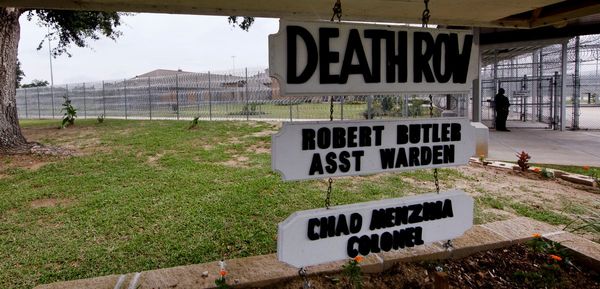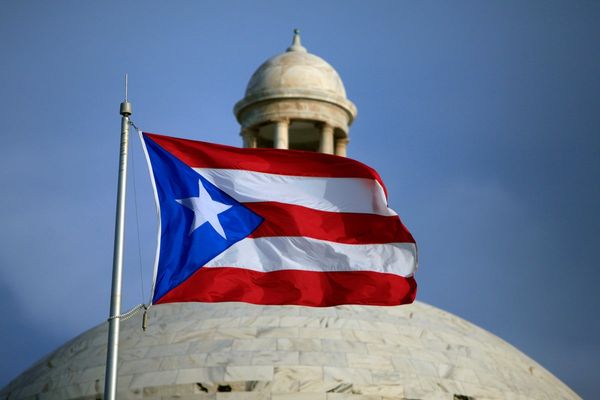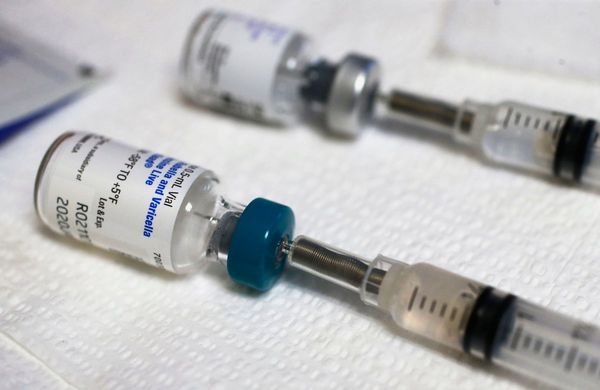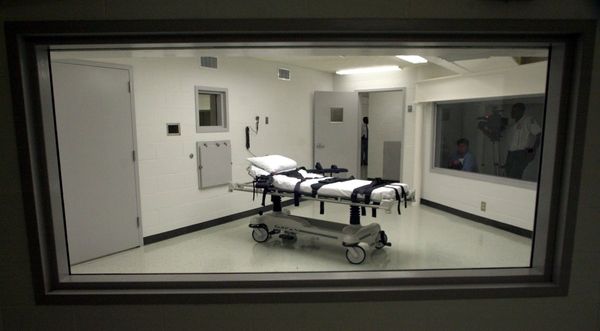
Growth in the U.S. economy slowed notably last quarter, Commerce Department data indicated Thursday, as consumers tightened their belts and companies ran down inventories amid concern about a broad slump in demand over the coming months.
The world's biggest economy expanded by an annualized rate of 1.6%, down from the 3.4% pace recorded over fourth quarter 2023, and well south of Wall Street's 2.5% forecast.
Perhaps more worrying for both government officials and policy makers at the Federal Reserve, however, was the parallel spike in inflation pressures, with the central bank's preferred gauge rising by a faster-than-expected 3.7% over the three month period.
Mike Reynolds, vice president of investment strategy at Glenmede, says President Joe Biden might need to accelerate government spending, "as is typical in years when a sitting president seeks reelection." The idea would be to offset the impact of the Fed's elevated lending rate, which currently sits at a two-decade high of between 5.25% and 5.5%.
"Another positive GDP print adds another notch to the belt for the soft-landing argument, though the risk of recession still remains higher than normal given the tight stance of monetary policy," he said.
"Fiscal stimulus has, so far, provided an offset to monetary-policy headwinds and is likely to continue to help broaden the pathway to soft landing." A soft landing for the economy would show slowing inflation without triggering recession.

But the overall leap in price pressures followed a series of warnings from Fed officials over the past few weeks that they're still seeking "confidence" in the notion that inflation is heading back toward the central bank's preferred 2% target.
And that has markets even more concerned.
'Stubborn inflation and stifled growth': Stagflation
"It’s one thing to have moderate inflation with above-average growth," said Bret Kenwell, U.S. investment analyst at eToro. "It’s another thing to have stubborn inflation and stifled growth, which has to be the Fed’s top concern at this point in the rate cycle."
Slowing growth and faster inflation raise the specter of stagflation in an economy that, given its reliance on consumer spending, can be significantly damaging.
“Stagflation is a growing risk after GDP missed and the price index surprised to the upside," said David Russell, global head of marketing strategy at TradeStation. "If inflation isn’t getting better with such a weak growth, you have to wonder if the trend toward lower prices will continue."
Related: Wall Street faces make-or-break week with Tesla, GDP, inflation on deck
"The bump in [Treasury bond] yields after the report suggests rate cuts are increasingly in doubt,” he added.
Benchmark 2-year note yields, the most-sensitive to changes in interest rate forecasts, rose 9 basis points following the GDP and inflation data to change hands at 5.014%, their highest since last November, while 10-year yields hit a fresh five-month peak of 4.731%
Rate traders also responded to the Commerce Department data by pushing back their forecasts for a Fed rate cut until at least November and possibly beyond and have pared the number of rate reductions expected this year to just one.
A speed-up in Q1 inflation has now delayed the first, and only cut this year to December pic.twitter.com/slqfFPa2qc
— Ole S Hansen (@Ole_S_Hansen) April 25, 2024
"The hot inflation print is the real story in this report," Fitch Ratings analysts wrote. "If growth continues to slowly decelerate but inflation strongly takes off again in the wrong direction, the expectation of a Fed interest rate cut in 2024 is starting to look increasingly more out of reach."
The odds of a June rate cut, a virtual lock earlier this year, have collapsed to just 9.4%, based on data from CME Group's FedWatch. None of the four Fed meetings between July and December indicate a higher than 45% chance of a quarter-point reduction.
Sharper consumer-spending slowdown?
Jeffrey Roach, chief economist for LPL Financial in Charlotte, says details of the first-quarter GDP estimate suggest a weaker growth rate on the horizon. But he sees inflation pressure moderating at the same time.
"The economy will likely decelerate further in the following quarters as consumers are likely near the end of their spending splurge," he said. "Savings rates are falling as sticky inflation puts greater pressure on the consumer."
"We should expect inflation will ease throughout this year as aggregate demand slows, although the path to the Fed’s 2% target still looks a long ways off," Roach said.
Related: No landing, no Fed rate cuts: the markets' new bet on 2024
Ian Shepherdson of Pantheon Macroeconomics agrees that pandemic-era savings have largely been depleted. He noted that "only the very wealthiest households still have substantial excess that can be tapped to support consumption," which also leads to slower consumption over the back half of the year.
More Economic Analysis:
- Watch out for 8% mortgage rates
- Hot inflation report batters stocks; here's what happens next
- Inflation report will disappoint markets (and the Fed)
He also argues that this should help blunt inflation pressure, as wage gains moderate and year-on-year comparisons support lower overall readings.
"It’s a close call, but we still see a path to the first Fed rate cut in June if, as we expect, the next two labor-market reports show job growth is slowing markedly and the [consumer-price index] reports are benign," he said.
He may be proven correct.
The Bureau of Economic Analysis reported on April 26 that the PCE Price Index, the Fed's preferred inflation gauge, showed core prices rose at an annualized rate of 2.8% last month, the slowest in three years.
The tally was just ahead of Wall Street's forecast of 2.7% but matched the February reading, suggesting modest progress from the Federal Reserve in slowing price pressures in the world's biggest economy.
The BEA also noted that personal incomes in March rose 0.5%, perhaps reflecting the ongoing resilience in the labor market, while spending matched February's 0.8% increase.
"After a bit firmer read on inflation within the GDP report yesterday, on top of multiple months of hotter than expected CPI data, today’s report is a bit of a relief and being reflected with lower yields in the bond market and higher stock prices," said Steven Wyett, chief investment strategist at BOK Financial.
"Not being worse than expected is good, but we will need to see a few reports of lower-than-expected inflation to expect the Fed to be confident inflation is declining sustainably towards their 2% target,” he added.
Related: Veteran fund manager picks favorite stocks for 2024







